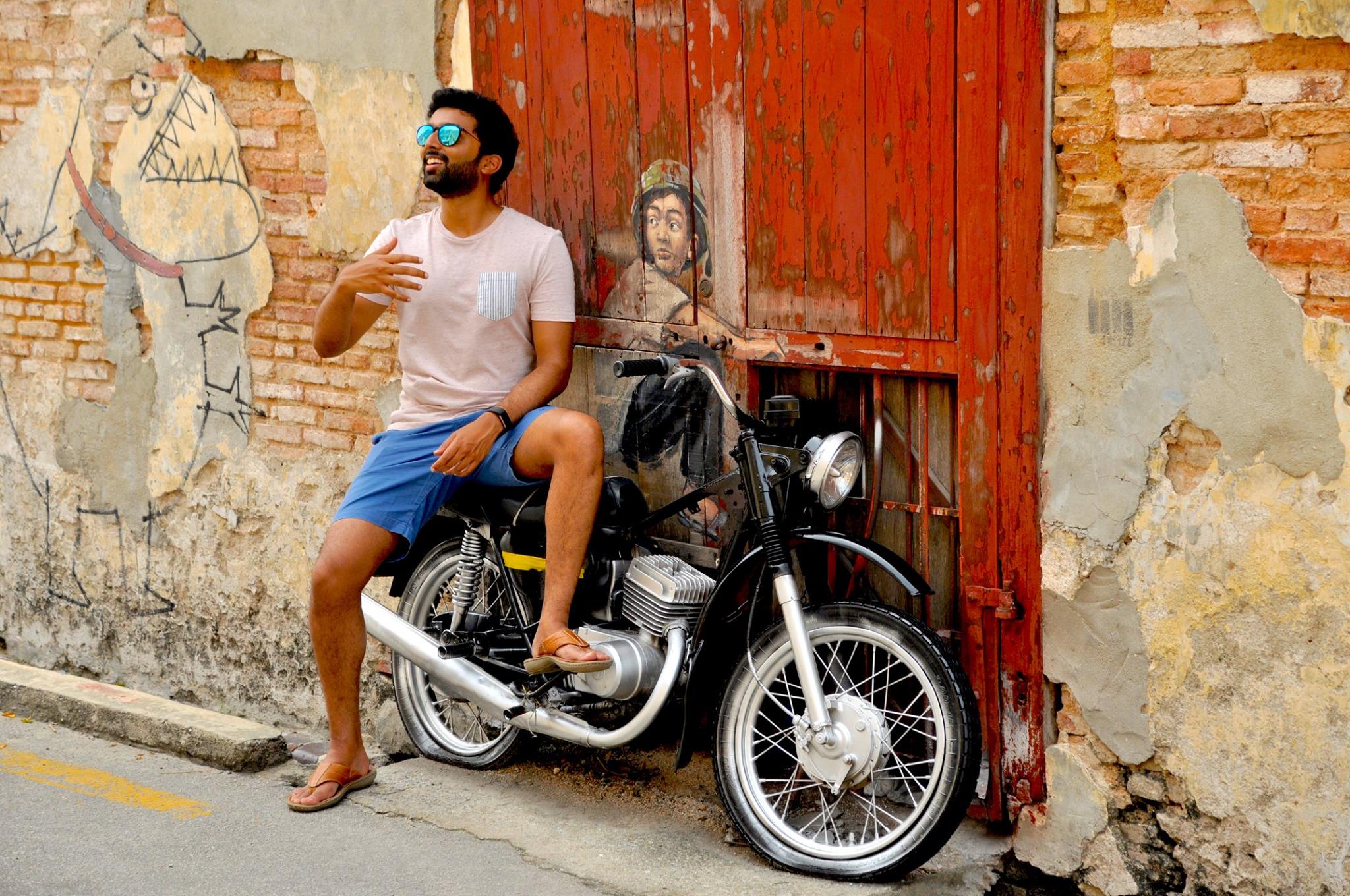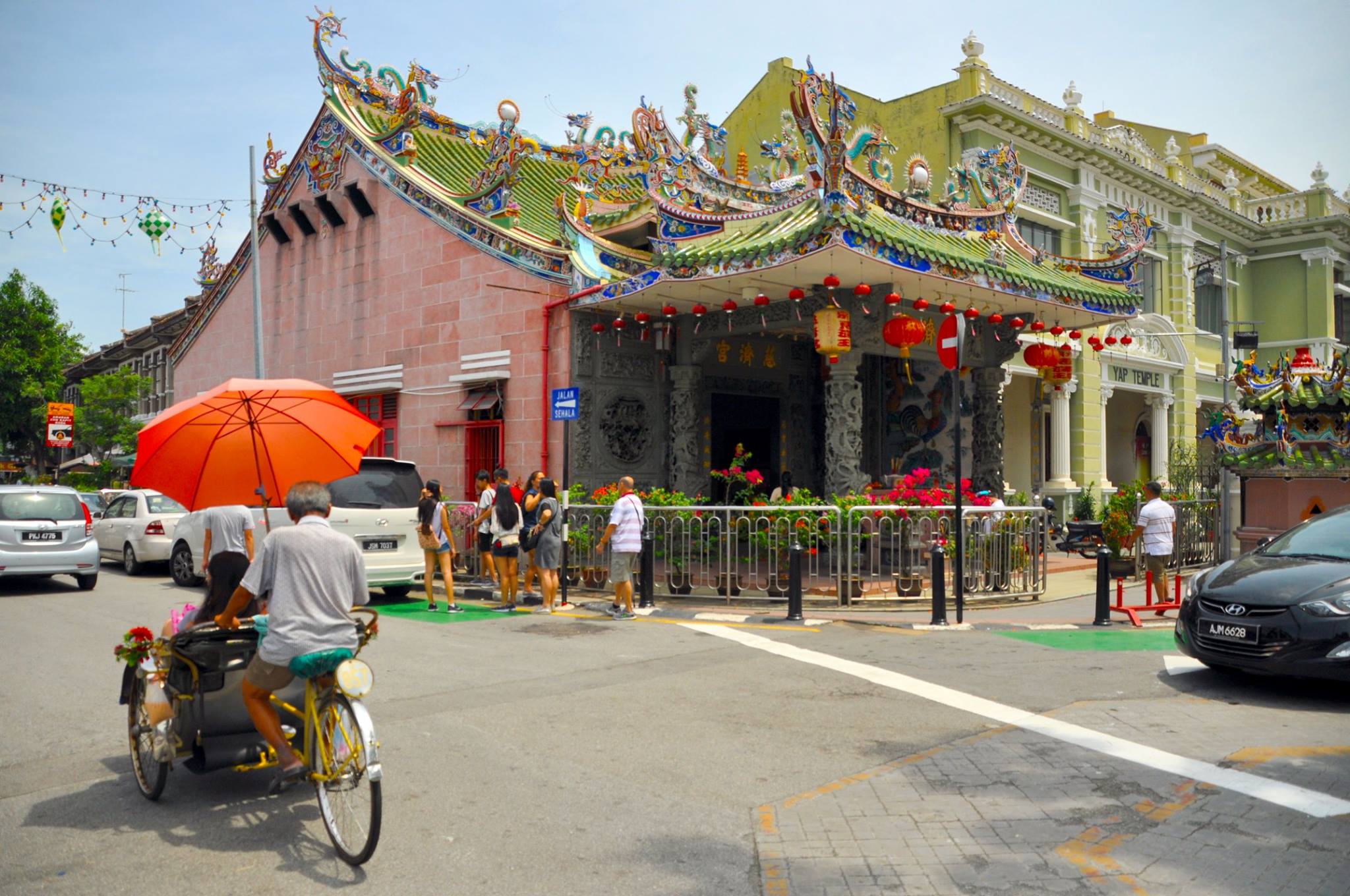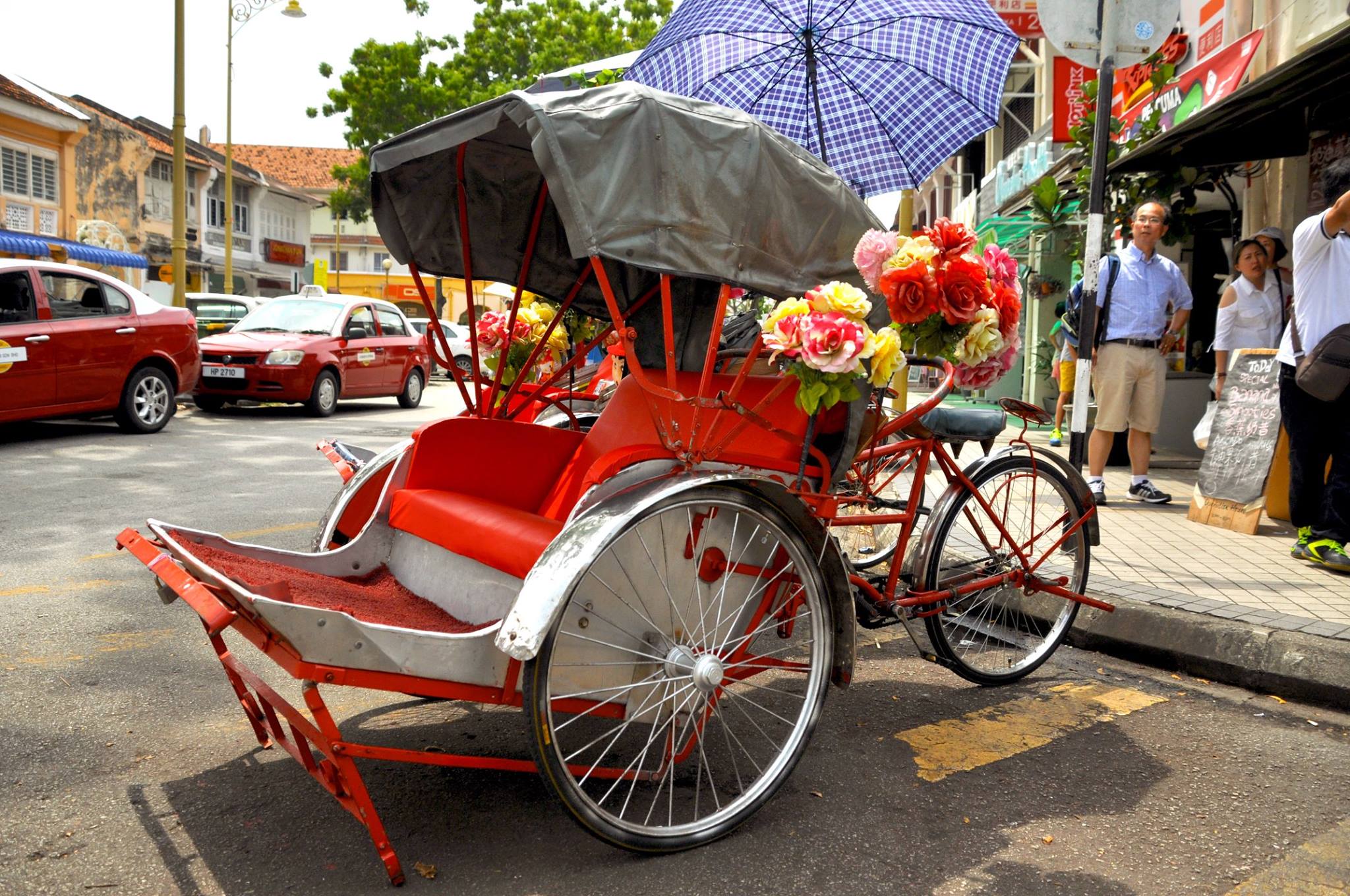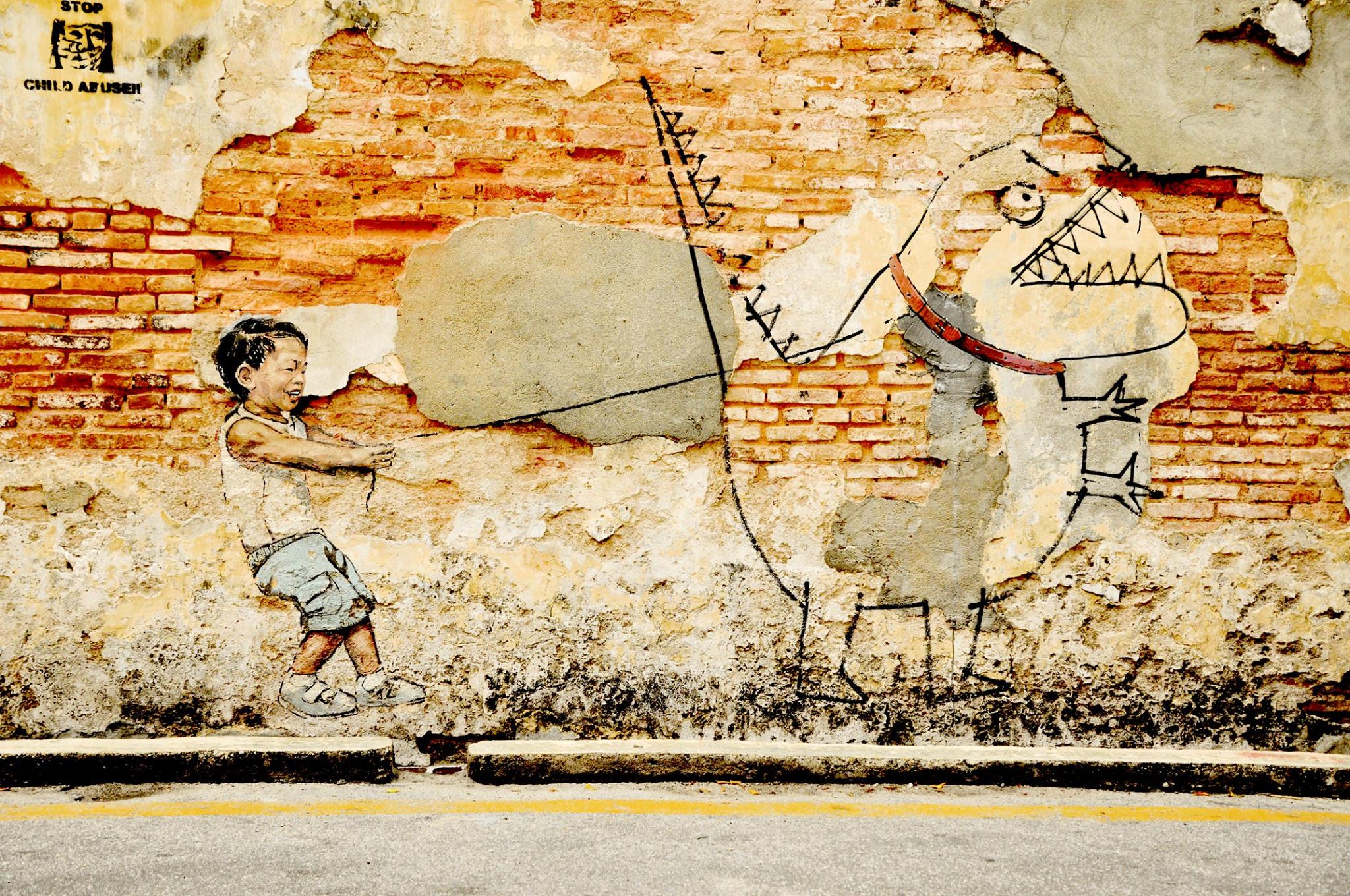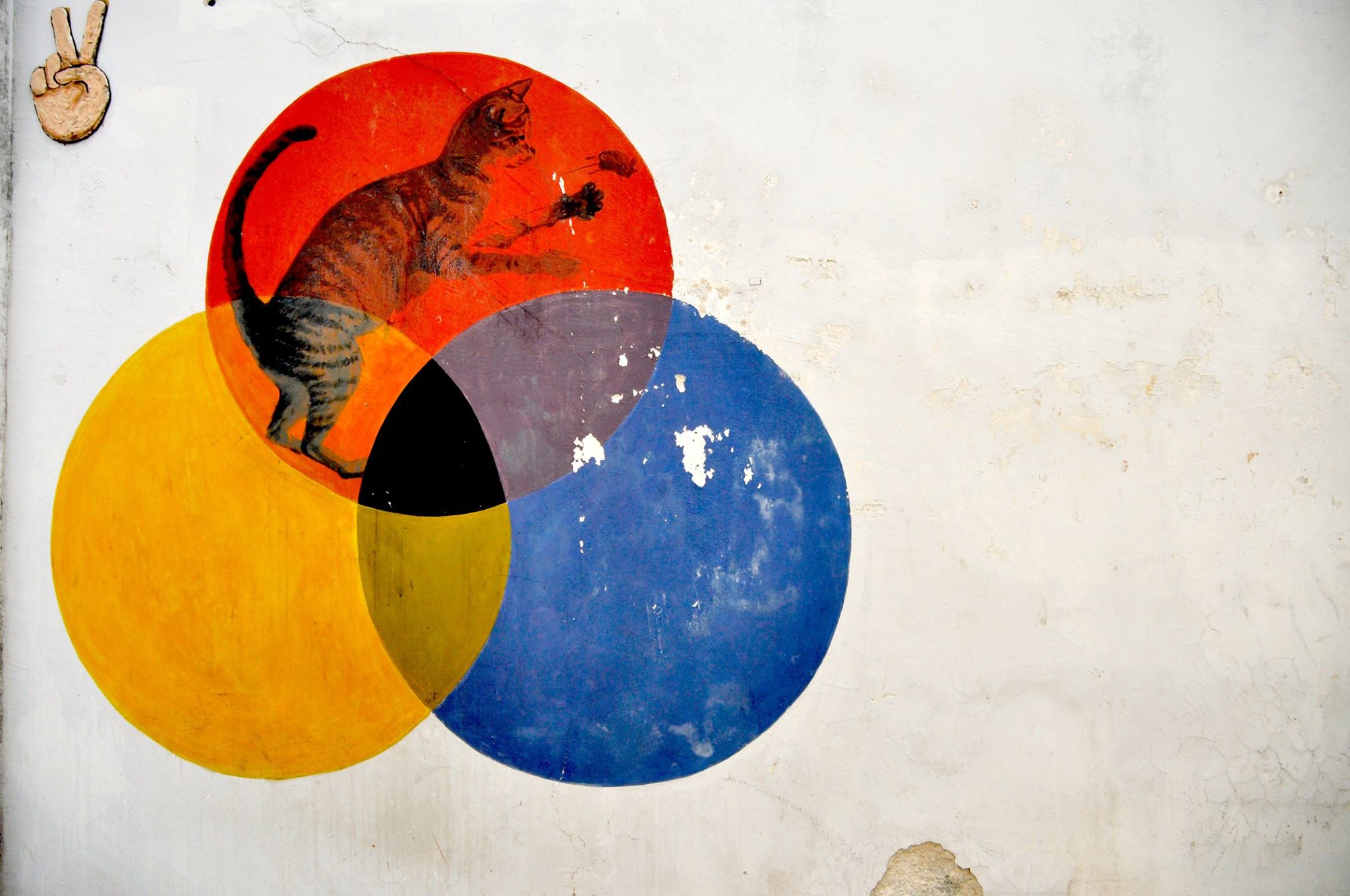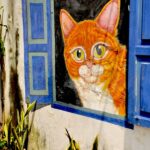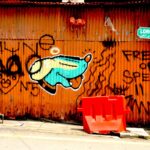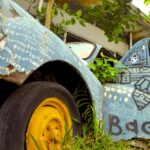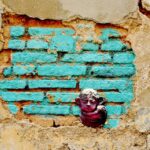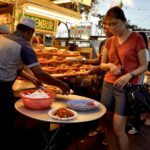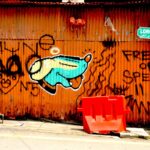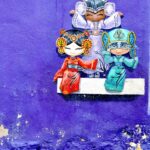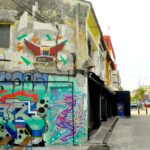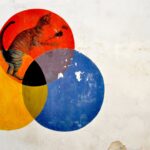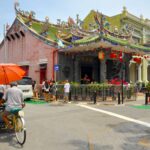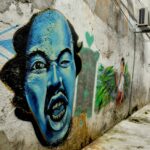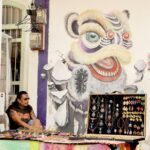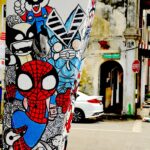It is hard to describe the vibe of Penang. It is what I imagine a mashup between Asia, Cuba, and Australia to be like. Colonial buildings stand tall along cobblestone streets while wooden shacks on stilts are scattered amongst thick, lush jungle. The beachy areas of the north like Batu Ferringhi have chill Caribbean ambience, while Georgetown reminds me a lot of Sydney’s old city harbour areas. Penang is completely unique. It is not just special compared to other Asian countries, it is different to other parts of Malaysia.
George Town for Culture
Getting There
Flying into Penang is easy, it has a major international airport which is serviced by all the big airlines as well as budget ones. Once on the island, taxis are the best way to get around. They are pretty cheap, drivers speak English and are they really friendly. From the airport in the South to the heart of George Town in the Northeast is around 30 minutes or 20 km in a taxi. This will cost you about 45 MYR (US $11). Penang’s beaches are nothing to write home about. They are pleasant for sure, but the water is not crystal clear and magically turquoise like the waters of Malaysia’s eastern islands. The beaches simply act as a nice, atmospheric backdrop to complete the laid-back lifestyle of Penang Island. The real reasons for a visit to Penang are the art, history, culture, the food, and the people.
The Art History
The city of George Town has embraced its artistic image with public works being produced and funded by the local government to add to the festive atmosphere. Most famously, in 2009 a project called “Voices of the People” by local artist Tang Mun Kian won an art challenge, and a proposal for 52 metalwork sculptures to be erected around George Town began. These sculptures depict important moments in Penang’s history as well as street scenes with humorous captions which play on Penang’s diversity and culture with sassy tongue-in-cheek wit. It is widely believed that this move from the government is what kick-started Penang’s street art scene.
Ernest Zacharevic
Credit for the beginning of the street art culture in Penang also usually goes to Ernest Zacharevic. The Lithuanian-born artist was commissioned to paint six public murals in George Town in 2012. He is still based in Malaysia and continues to produce stunning large-scale works of art. His work in Penang includes; Children on Bicycle, Boy on Motorcycle, Reaching Up, and Little Boy with Pet Dinosaur. His paintings are some of the most famous and queues of tourists can be found on any given day, waiting patiently to have their photo taken with Zacharevic’s work.
Hin Bus Depot
Zacharevic went to Penang to do a solo exhibition in 2014 called Art is Rubbish/Rubbish is Art. At the time, the only place big enough was the Hin Bus Depot. Back then, the Bus Depot was not being used as a gallery, it was a beautiful open space and a group of artists saw a lot of potential in it. They worked with the owner of the space to create a gallery and event venue on a scale that had not been seen before in the Penang art scene. It was then that they hosted the first ever George Town Culture Festival and Zacharevic completed many works which still adorn the dilapidated and beautiful walls of the Hin Bus Depot to this day.
Penang Public Arts Panel
It was also in 2014 that the Penang Public Arts Panel (PARP) was founded to oversee all public art in the area. With the establishment of this committee, came more bureaucracy, censorship and paperwork for artists, but also the promise that Penang’s World Heritage status would not be compromised by over-zealous or unqualified street painters. All proposals must be submitted to the committee including the exact type of pigment to be used. Artists must use only water-based paints which are not permanent and will not damage the facades of the heritage buildings. It is for this reason, the paintings you see in real life are seriously sun-weathered and pale compared to the vibrant photos of the same murals which you can find online. The art is designed to eventually wear away.
Here Today, Gone Tomorrow
With the knowledge that what you can see today, might easily be gone tomorrow it is even more important to make a visit to Penang and see the remarkable and fascinating work for yourself before it is too late.
Follow The Art
Start your journey on the corner of Gat Lebuh Chulia and Pengkalan Weld. Walking up Chulia, turn left at Lebuh Pantai (Beach Street). Turn right up Gat Lebuh Armenian and you are right in the heart of the old town art. From here there are a few streets you should wander up and down. Look at Lebuh Cannon and Lebuh Ah Quee. Just wandering around this area could take you a couple of hours, and in the Malay heat, take it slow and enjoy multiple stops in the quaint yet prolific cafes lining these ancient alleys. There are plenty of online maps to guide you if you want to check every painting off your bucket list. There are also paper tourist maps around town and trishaw drivers who are happy to make your journey easier by peddling you around the streets.
Penang is a magical place and you will fall in love with its culture, beauty and cuisine. Take a week or two and see the whole island, reserving a day or two for boat trips out to the remote surrounding island for beaches and snorkelling.Happy Travels!
Note: This article was originally published on – now defunct- travel site: Travelista
Original URL: www.travelista.club/guides/malaysias-street-art-in-george-town-penang
My Photography of Penang
